How to convert a 3 shaft draft to weave with 1 pick up stick
draftspick-updeep diveAs discussed in my last post, some 3 shaft drafts can be woven using 1 rigid heddle and 1 pick up stick. But given that a draft can be woven with 1 stick, how do you weave it?
As a super quick summary of that post, you can tell if you can weave a draft with 1 pick up stick by looking at the unique 'treadles', that is the columns in the tie up section, and following these rules:
- If there’s more than 4 columns, the draft can’t be woven with 1 stick.
- If more than 2 columns use only one shaft, the draft can’t be woven with 1 stick.
- If more than 2 columns use two shafts together, the draft can’t be woven with 1 stick.
- If there are 4 treadles, there will be 1 shaft that isn’t used alone. If it’s used in both paired shafts, the draft can’t be woven with 1 stick.
If the draft doesn't satisfy those rules, it can instead be woven with 2 heddles or a heddle and 2 pick up patterns; this post is specifically about the subset of 3 shaft drafts that can be woven with 1 pick up pattern.
For much more detail check out How can you tell if you can weave a 3 shaft draft with just 1 pick up stick?.
So how do you convert a draft to weaving with 1 pick up stick? #
The first step to converting the draft is to figure out which shaft in the draft gets mapped to the various heddle and stick 'shafts': holes, slot yarns that are picked up, and slot yarns that aren't picked up. This is based on the tie up section of the draft, and typically only one configuration will work due to the limitations of the slot yarns that aren't picked up.
Next, you need to work out the weaving sequence based on the shaft mapping and the treadling. Each distinct treadle in the draft represents a different shed, which will use one of 4 different combinations of the heddle and pick up stick positions. This is based on the tie up and treadling sections of the draft.
Finally, you need to work out the threading. Often you will be putting multiple yarns into some slots or holes, and/or skipping some slots or holes. This uses the shaft mapping you came up with and the threading section of the draft.
I'll go through those steps in detail, and then follow up with examples from a sampler I wove using some drafts from Handweaving.net, a great source of mostly historical weaving drafts.
1. Map the shafts to the heddle and stick positions #
In most cases, the tie up will have 3 or 4 distinct columns, representing different sheds, all shafts are used in at least one column, and no shaft is used in every column. This covers any draft that actually needs 3 shafts and produces a stable fabric; see the section on Edge Cases if that doesn't apply to your draft.
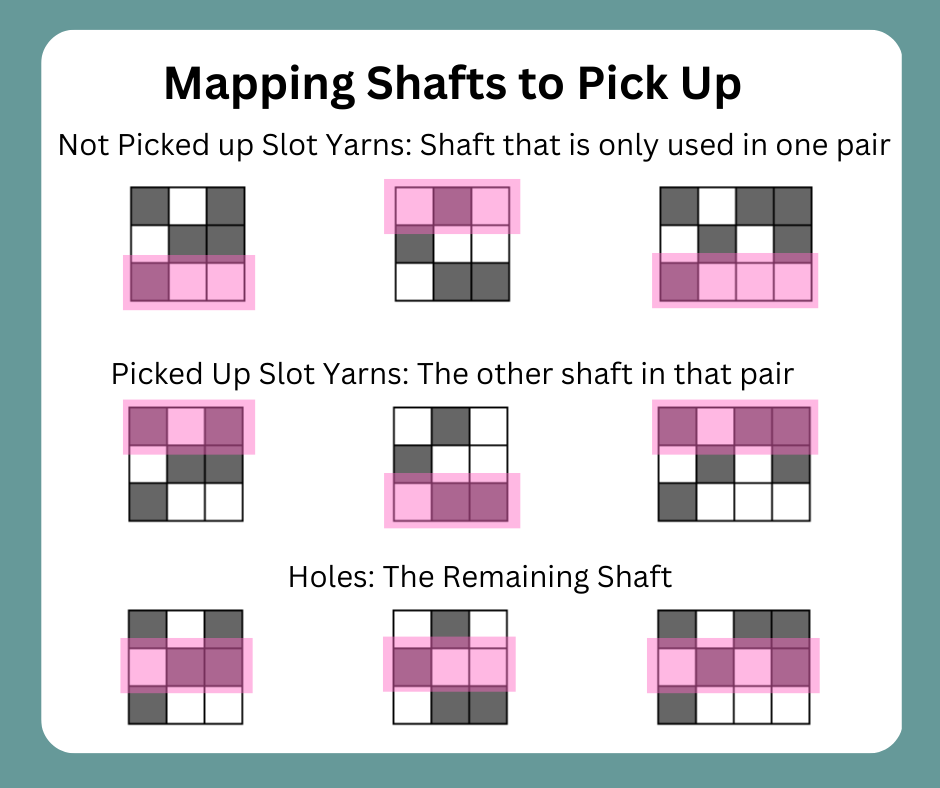
The first step is to figure out which shaft in the draft corresponds to the slot yarns that aren’t picked up, as it's the most limited.
There will be one row in the tie up that is only used (filled in) once, and there will be another box used in the same column. That shaft is the slot yarns that aren’t picked up, shown in the first row of the image. That column in the tie up represents your "Down" heddle position - all of the slot yarns are on top of the shed.
The other shaft used in that column is the slot yarns that are picked up, see the second row in the image for some examples.
The remaining shaft is the holes, highlighted in the last row of the image.
It may be helpful to write this down next to the corresponding tie up row on the draft as you’ll be referring to this later.
2. Figure out the Weaving Sequence #
Go back to the tie up of your draft, and take a look at each column and your notes for the shafts. This represents how the shafts are used together.
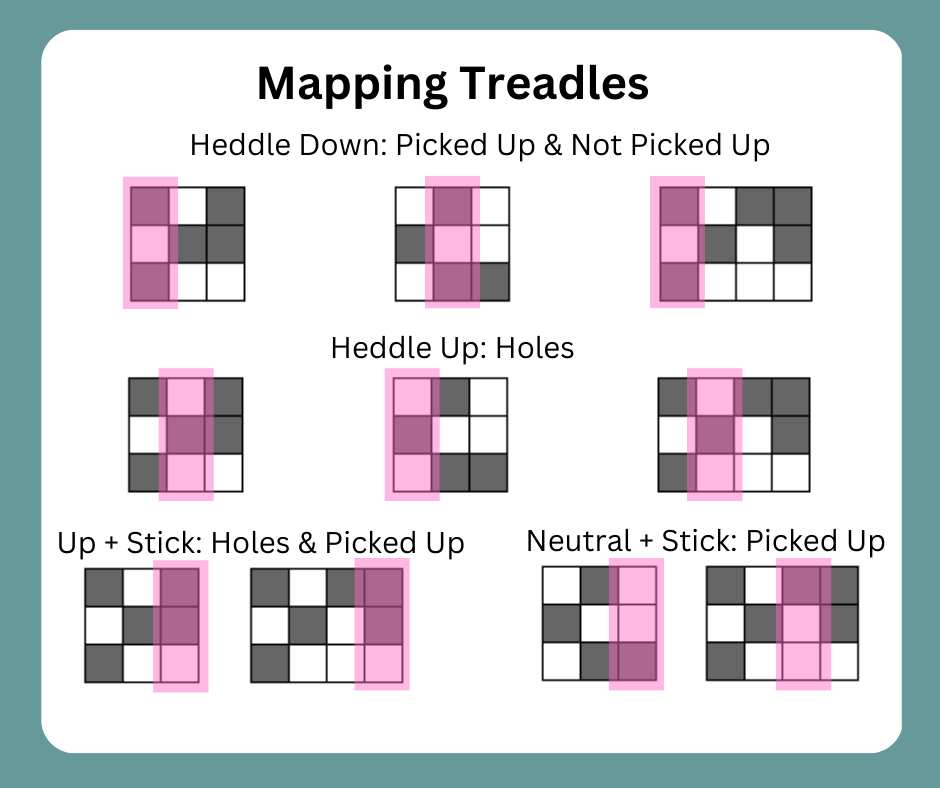
Your 4 possible heddle & stick positions while weaving are:
- Up: Only the hole shaft is used.
- Up & Stick: Hole shaft and picked up shaft is used.
- Neutral & Stick: Only the picked up yarns shaft.
- Down: The picked up and not picked up shafts.
You can label each column based on the shafts that are used in it, and then go through the treadling to label each row for a full repeat of the pattern based on which column is used in the treadling.
When the same shed is used more than once in the weaving, go around the edge warp yarn to secure the end. This is something that seems to come up fairly commonly on the historical drafts on Handweaving.net that meet the criteria for weaving with 1 pick up stick.
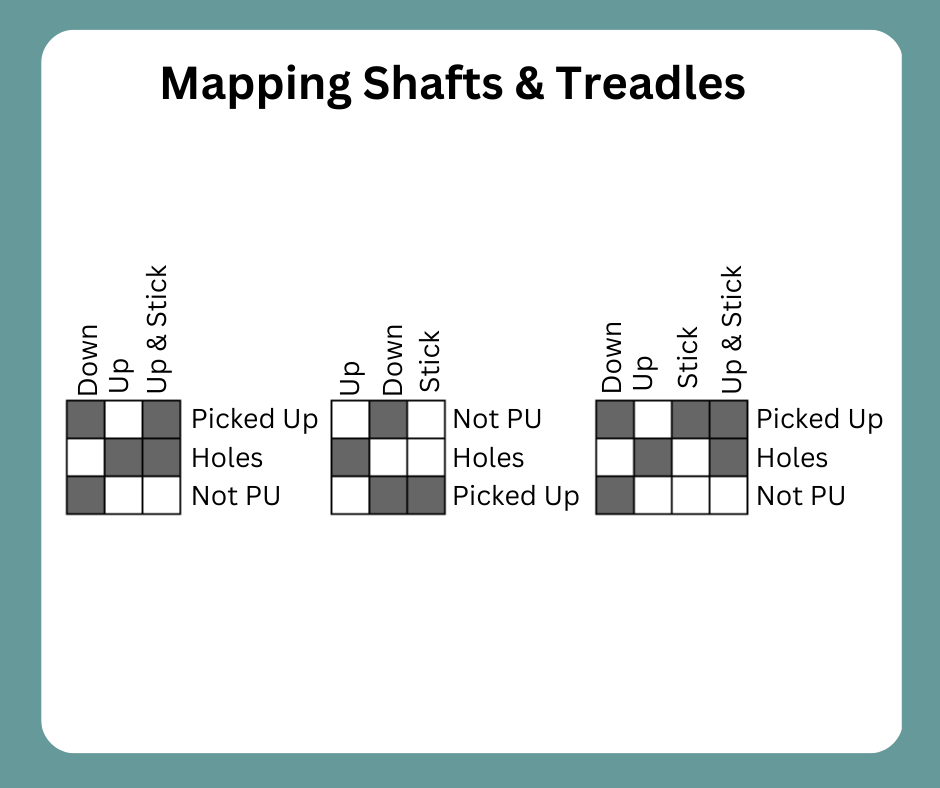
3. Figure out the Threading & Pick Up sequence #
At the threading stage, all of the yarns in the hole shaft go through holes, and the rest go through slots. You will often end up with something that isn’t 1 thread each per slot and hole.
Once you've warped the loom and are ready to start weaving, pick up the picked up slot yarns.
Where you have 2 or more yarns that go together, you can either put multiples through the same slot or hole, or skip slots or holes, or, a combination of both. In this case, the EPI of the fabric will often be different from the DPI of your heddle, for example, if you have 5 yarns through 4 holes/slots, you’ll have 120% of the DPI of your heddle. My soft guidance here is that you probably want to split them over multiple if you have more than 3 yarns in a slot or 2 in a hole, and that it can be easier to pick up or not pick up all of the yarns in a slot.
In a lot of these cases, it’s probably easier to indirect warp than direct warp. If you do want to direct warp, you need to figure out the threading repeat and how many yarns you need per repeat. If this isn’t divisible by 2, then you’ll want to work with 2 repeats.
Sampler - 3 drafts worked out on the same warp #
To make sure I really understood this conversion process, I wove a sample using 3 different drafts that were able to use the same warp - the hole shaft was always the same, but the pick up varied. I used Cascade 220 Fingering yarn, in a 12.5 DPI heddle, with a final sett of 15 as every 2nd slot thread is doubled, resulting in 5 yarns for every 4 slots/holes.
I used direct warping for this sampler - I worked out a pattern where I pulled a loop through 1 in 4 of the holes in addition to each slot, but it took some effort and I made mistakes and had to move a bunch of threads around! Indirect warping would have been easier.
The drafts are from Handweaving.net, which is a source of many drafts primarily from historical sources. Anyone can browse drafts and see the drawdown, but in order to see the full draft details like the tie up, you need a paid subscription. I've included a small snippet of the drafts discussed here for educational purposes.
The front photo represents the side that was up while weaving.
I started with Handweaving.net #27974.
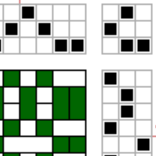
Shafts 1 and 3 are used as a pair, but Shaft 3 isn’t used alone. So Shaft 3 is the slot threads that aren’t picked up, which are singled, Shaft 1 is yarns which will be picked up, which are doubled, and shaft 2 is the holes.
The Treadling is then:
- Up
- Down
- Down
- Up
- Stick
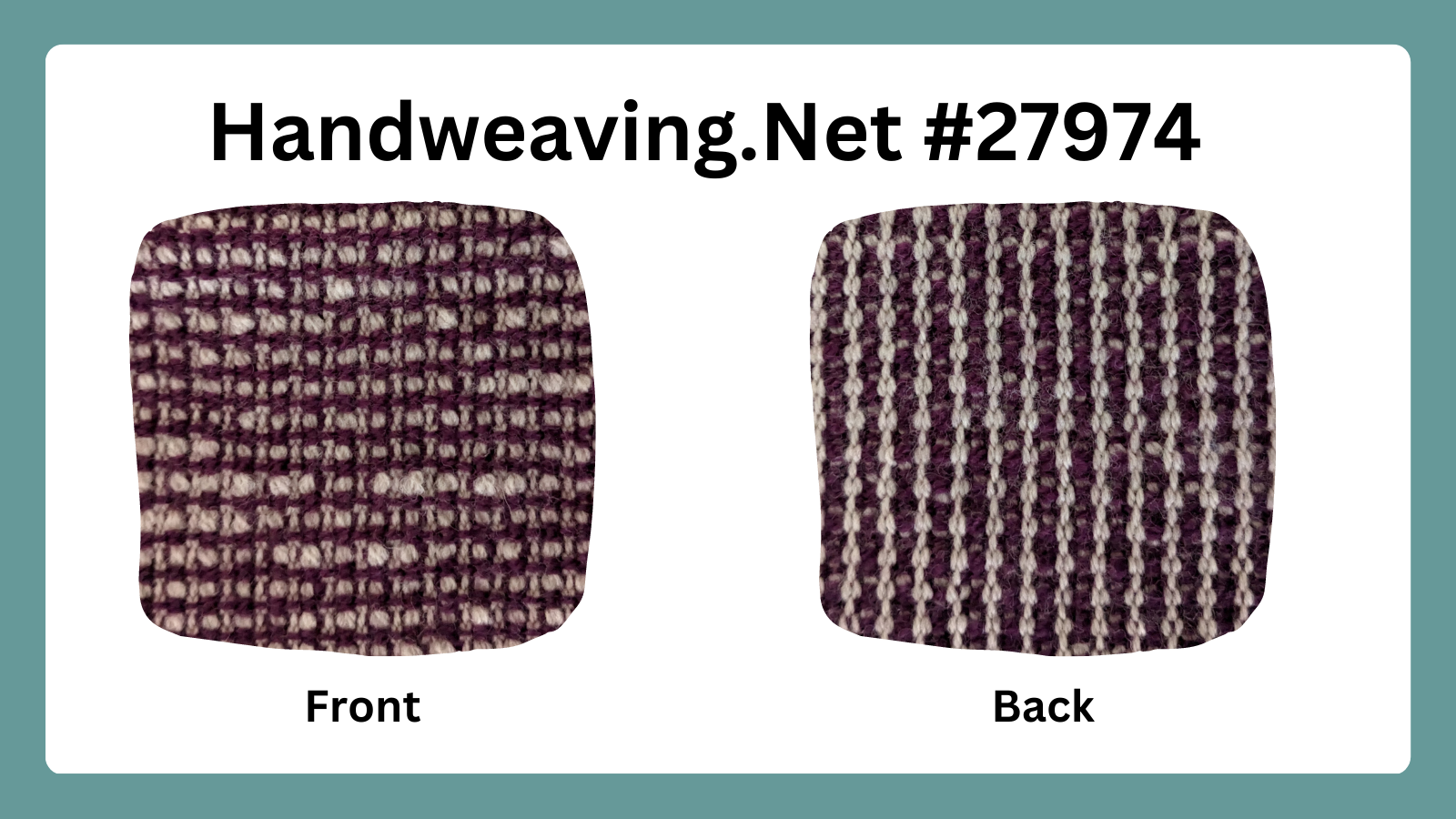
Both sides of this fabric are quite different, but I like them both!
Next I wove Handweaving.net #64536
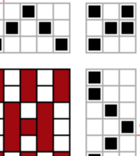
It has 2 pairs in the tie up. Shaft 1 is only used in one pair, so it’s the slot threads that aren’t picked up. Shaft 3 is the other one used in the pair with shaft 1, so it’s the remaining slot yarns. Which leaves shaft 2 as the holes. This one uses warp floats (Up & Stick) rather than weft floats (Stick), and the pick up is the opposite of #27974, so the single slot yarns are picked up.
And the treadling is:
- Down
- Down
- Up
- Up + Stick
- Up
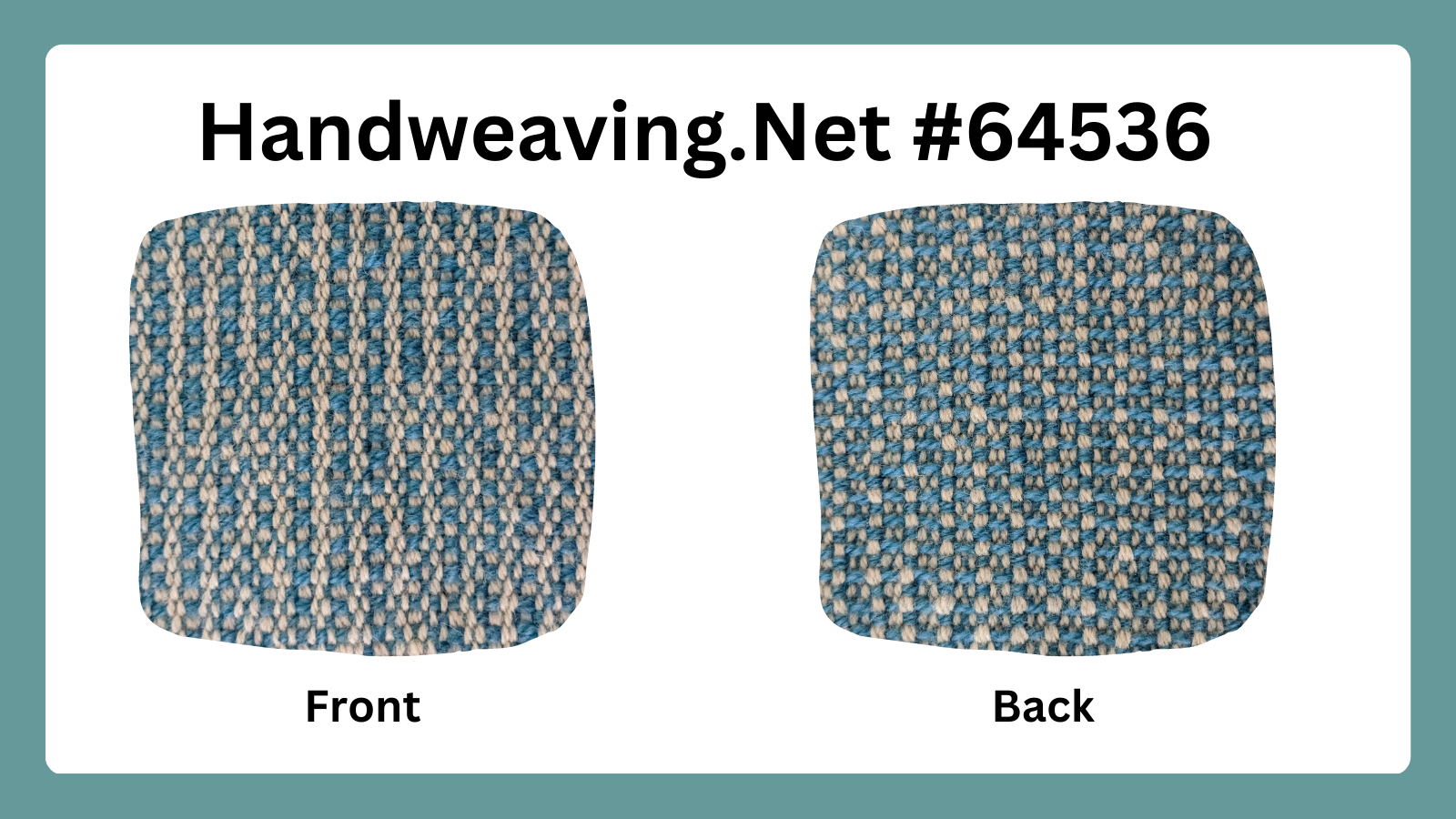
I find the front of this one is a very subtle pattern, and actually prefer the back!
Finally, I wove little bit of Handweaving.net #2512, using the ends of my weft yarn so it's in 2 colors.
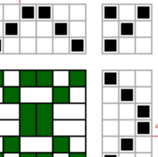
In this case, shaft 1 corresponds to the not picked up slots (the singled yarns), shaft 2 to the holes, and shaft 3 to the picked up slot yarns, which are the doubled ones. While the draft looks fairly different from #27974, it's just a different weaving sequence when converted to weaving with a rigid heddle and a pick up stick.
The treadling is:
- Down
- Up
- Stick
- Stick
- Up
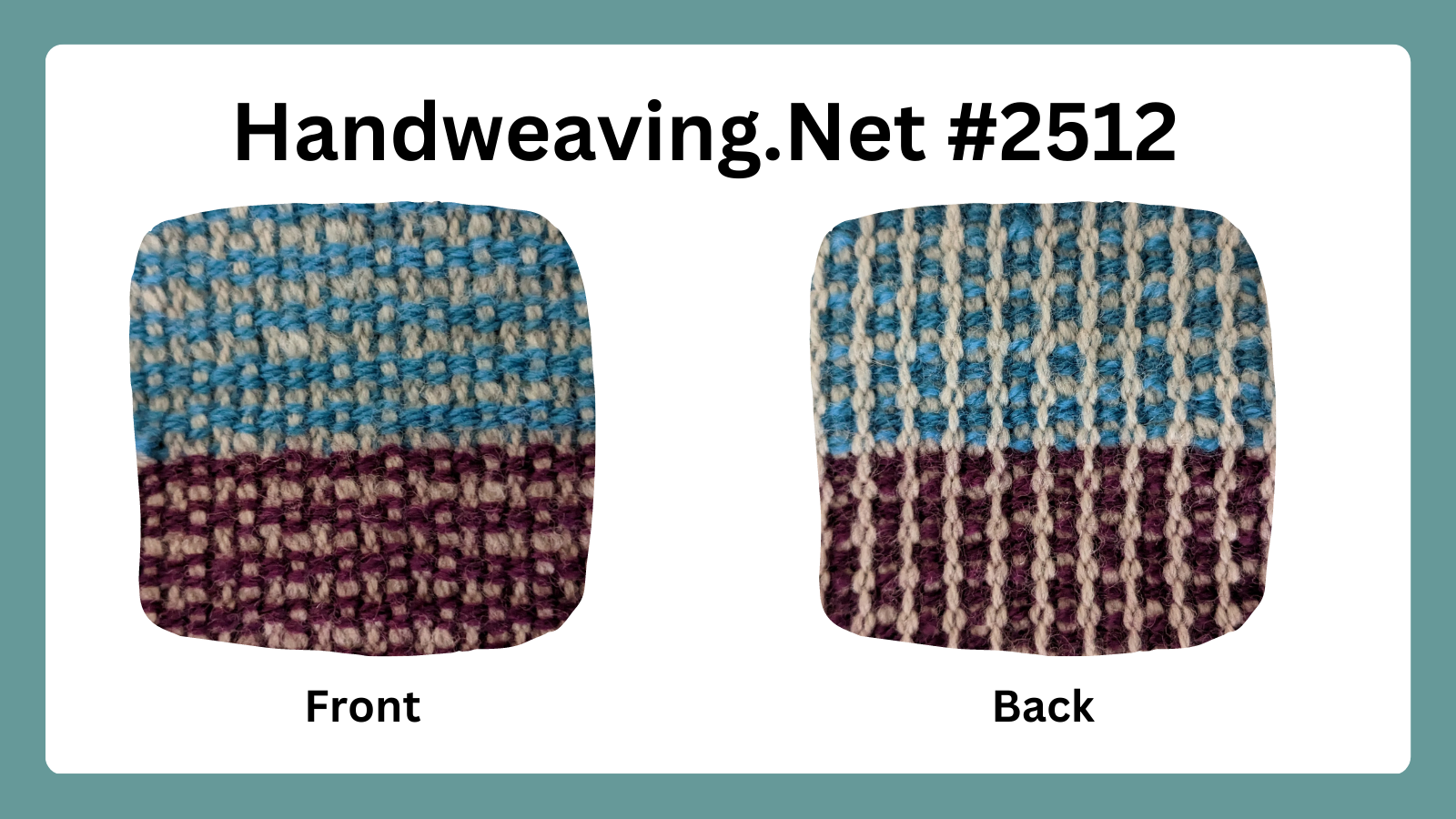
I find I like this one the most out of the samples, it's a shame it's just a third pattern I threw in at the end!
I hope this post inspires some weaving projects with some of the weird and wonderful 3 shaft drafts out there!
Check out Not So Rigid Designer, the online weaving software for rigid heddle loom weavers!
